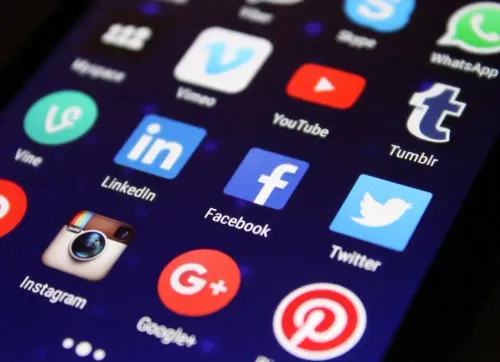What is user generated content?
User-generated content (UGC) is any form of content that is created by your customers or audience and shared on various platforms, such as social media, blogs, websites, etc. UGC can include posts, reviews, testimonials, videos, photos, and more. It can also involve influencer marketing, where influential individuals promote your brand or products to their followers.
UGC is not only a great way to showcase your products or services, but also a powerful tool to amplify engagement and strengthen trust in your brand. Engagement and trust are two essential factors that can make or break your brand’s success. Engaged customers are more likely to buy from you, recommend you to others, and become loyal advocates for your brand. Trustworthy customers are more likely to believe in your brand’s value proposition, quality, and reputation.
In this article, we will explore how UGC can help you achieve these goals and what are some of the best practices for utilizing UGC effectively.
The Power of User-Generated Content
UGC is a form of word-of-mouth marketing that can have a significant impact on your brand’s awareness, reach, and reputation. According to a report by Stackla, 79% of consumers say that UGC highly impacts their purchasing decisions, while 86% of consumers say that authenticity is important when deciding what brands they like and support.
UGC can help you achieve the following benefits:
- Increase your brand’s visibility and exposure by reaching new audiences and expanding your online presence.
- Boost your brand’s credibility and authority by showcasing real-life customer experiences and opinions.
- Enhance your brand’s personality and identity by reflecting your brand’s values, culture, and voice.
- Improve your brand’s SEO ranking by generating more organic traffic, backlinks, and social signals.
Amplifying Engagement through UGC
Engagement is the degree of involvement and interaction that your customers have with your brand. Engaged customers are more likely to be satisfied, loyal, and profitable for your brand. UGC can help you amplify engagement by encouraging customers to become active participants, fostering a sense of community and belonging, and increasing social proof.
Encouraging Customer Participation
One of the ways to increase engagement is to invite customers to create and share UGC related to your brand. This can make them feel more valued, involved, and connected with your brand. You can incentivize customer participation by offering rewards or recognition for creating UGC. For example, you can run contests, challenges, or giveaways that require customers to submit UGC as an entry. You can also create dedicated hashtags for customers to use when they share their experiences with your products or services.
Some examples of brands that have successfully encouraged customer participation through UGC are:
Starbucks: The coffee giant launched the #RedCupContest campaign in 2015, where customers were asked to decorate their red holiday cups and share their photos on Instagram for a chance to win a Starbucks gift card. The campaign generated over 40,000 entries in three weeks and increased Starbucks’ Instagram followers by 8%.
GoPro: The action camera company encourages its customers to capture and share their adventures using GoPro products. GoPro features the best UGC videos on its website, social media channels, and YouTube channel, where it has over 10 million subscribers. GoPro also rewards its customers with cash prizes for submitting their videos to the GoPro Awards program.
Fostering Community-Building
Another way to increase engagement is to create online communities or forums where customers can interact with each other and with your brand. This can foster a sense of community and belonging among your customers and make them feel more loyal and committed to your brand. You can encourage discussions around your products or services, provide support or feedback, or share tips or insights with your customers.
Some examples of brands that have successfully fostered community-building through UGC are:
Lego: The toy company has created an online platform called Lego Ideas, where fans can submit their own Lego creations and vote for other fans’ submissions. The most popular submissions are reviewed by Lego experts and have a chance to become official Lego products. Lego Ideas has over one million members who have submitted over 30,000 projects.
Sephora: The beauty retailer has created an online community called Beauty Insider Community, where customers can join groups based on their interests, preferences, or needs. Customers can ask questions, share reviews, post photos or videos, or chat with other beauty enthusiasts. Sephora also hosts live events and Q&A sessions with beauty experts and influencers on the platform.
Increasing Social Proof
Social proof is the phenomenon where people tend to follow the actions or opinions of others, especially when they are uncertain or unfamiliar with something. UGC can provide social proof for your brand by showing how other customers are using, enjoying, or benefiting from your products or services. This can influence potential customers to trust your brand and make a purchase decision.
You can increase social proof by sharing positive reviews or testimonials from customers on various platforms, such as your website, social media channels, or email newsletters. You can also showcase real-life product or service usage through photos or videos shared by customers.
Some examples of brands that have successfully increased social proof through UGC are:
Airbnb: The online marketplace for accommodation and travel experiences relies heavily on UGC to build trust and credibility among its users. Airbnb features customer reviews and ratings on its website and app, where users can see the feedback and experiences of other travelers who have stayed at a particular listing or joined a particular experience. Airbnb also encourages users to share their stories and photos on social media using the hashtag #Airbnb.
Glossier: The online beauty brand leverages UGC to showcase its products and customers. Glossier features customer photos and videos on its website, where users can see how the products look on different skin tones, types, and styles. Glossier also reposts customer content on its Instagram account, where it has over 2.7 million followers.
Strengthening Trust with UGC
Trust is the degree of confidence and reliability that your customers have in your brand. Trustworthy customers are more likely to buy from you repeatedly, refer you to others, and forgive you for any mistakes. UGC can help you strengthen trust by establishing authenticity and credibility, and improving transparency.
Establishing Authenticity and Credibility
One of the ways to strengthen trust is to establish authenticity and credibility for your brand. Authenticity means being true to yourself and your values, while credibility means being able to deliver on your promises and expectations. UGC can help you achieve these by providing genuine opinions and experiences from your customers.
Customers tend to trust fellow consumers more than branded advertising, as they perceive UGC as more honest, unbiased, and realistic. According to a survey by Bazaarvoice, 51% of consumers trust UGC more than other information on a company website, while 39% trust UGC more than news articles or blogs about the company.
UGC can help you establish authenticity and credibility by:
- Showing how your products or services solve real problems or fulfill real needs for your customers.
- Highlighting the unique features or benefits of your products or services that differentiate you from your competitors.
- Demonstrating how your products or services align with your brand’s values, mission, and vision.
Some examples of brands that have successfully established authenticity and credibility through UGC are:
Patagonia: The outdoor clothing and gear company is known for its environmental and social activism. Patagonia uses UGC to showcase how its products support its customers’ outdoor lifestyles and adventures, as well as its brand’s commitment to sustainability and conservation. Patagonia features customer stories and photos on its website, where users can see how the products perform in different environments and conditions. Patagonia also encourages users to share their stories and photos on social media using the hashtag #WornWear, which promotes the idea of repairing, reusing, and recycling clothing.
Warby Parker: The online eyewear company is known for its affordable and stylish glasses. Warby Parker uses UGC to showcase how its products fit different faces, personalities, and preferences. Warby Parker features customer photos on its website, where users can see how the glasses look on real people. Warby Parker also encourages users to share their photos on social media using the hashtag #WarbyParker, which generates over one million posts on Instagram.
Improving Transparency
Another way to strengthen trust is to improve transparency for your brand. Transparency means being open and honest about your business practices, processes, and policies. UGC can help you improve transparency by allowing customers to see behind-the-scenes moments or production processes of your brand. This can make them feel more informed, involved, and valued by your brand.
You can improve transparency by sharing UGC that reveals:
- How your products or services are made or delivered
- Who are the people behind your brand
- What are the challenges or difficulties that you face
- How do you handle feedback or complaints
Some examples of brands that have successfully improved transparency through UGC are:
Everlane: The online clothing company is known for its radical transparency approach. Everlane uses UGC to show how its products are ethically sourced, manufactured, and priced. Everlane features customer photos and videos on its website, where users can see the factories, materials, and costs behind each product. Everlane also shares customer content on its Instagram account, where it has over 1.5 million followers. Everlane also engages with customer feedback and questions on its social media channels, where it addresses issues such as product quality, sizing, or shipping.
Buffer: The online social media management company is known for its transparency culture. Buffer uses UGC to show how its team works remotely, collaborates, and learns. Buffer features customer photos and videos on its website, where users can see the faces and stories behind the company. Buffer also shares customer content on its Instagram account, where it has over 40,000 followers. Buffer also publishes its revenue, salaries, and diversity data on its website, where it invites users to comment or ask questions.
Challenges & Best Practices for Utilizing UGC Effectively
While UGC can offer many benefits for your brand, it can also pose some challenges that you need to be aware of and address. Some of the potential risks associated with UGC are:
- Inappropriate or low-quality content that can damage your brand’s reputation or image
- Legal or ethical issues that can arise from using UGC without proper consent or attribution
- Negative or harmful content that can affect your brand’s sentiment or customer satisfaction
To overcome these challenges and utilize UGC effectively, you need to follow some best practices, such as:
Managing Risk
One of the best practices for managing risk is to set clear guidelines for UGC submissions. You need to communicate what kind of content you expect from your customers, what kind of content you will accept or reject, and what kind of content you will use or feature. You also need to moderate and curate your UGC to ensure quality and relevance. You can use tools or platforms that can help you filter, review, and approve UGC before publishing it.
Some examples of brands that have successfully managed risk through UGC are:
Coca-Cola: The beverage giant launched the #ShareACoke campaign in 2014, where customers were invited to personalize their own Coke bottles with their names or messages and share them on social media. Coca-Cola set up a website where customers could check if their names were available and order their customized bottles. Coca-Cola also moderated the UGC submissions to prevent any inappropriate or offensive content from being printed or shared.
Dove: The beauty brand launched the #RealBeauty campaign in 2004, where customers were encouraged to share their photos and stories of what real beauty means to them. Dove created a website where customers could upload their UGC and see other customers’ UGC. Dove also curated the UGC to ensure diversity and inclusivity of different ages, sizes, shapes, colors, and backgrounds.
Encouraging UGC Creation
Another best practice for utilizing UGC effectively is to encourage UGC creation among your customers. You need to motivate and inspire your customers to create and share UGC related to your brand. You can do this by providing incentives or rewards for customers who create UGC, such as discounts, coupons, freebies, or recognition. You can also offer easy-to-use tools or templates for customers to create UGC, such as apps, filters, stickers, or generators.
Some examples of brands that have successfully encouraged UGC creation are:
Netflix: The streaming service giant encourages its customers to create and share UGC related to its shows and movies. Netflix provides various tools and templates for customers to create UGC, such as quizzes, memes, stickers, filters, or wallpapers. Netflix also rewards its customers who create UGC by featuring them on its website, social media channels, or newsletters.
Nike: The sportswear company encourages its customers to create and share UGC related to its products and values. Nike provides various incentives and rewards for customers who create UGC, such as access to exclusive events, products, or content. Nike also offers easy-to-use tools for customers to create UGC, such as the Nike+ app, which allows users to track their fitness activities and share their achievements.
Conclusion
In summary, the symbiotic relationship between engagement and trust is at the heart of brand success. User-generated content emerges as a potent strategy for achieving these goals. By focusing on customer participation, community-building, and social proof, brands can harness the true potential of UGC.
While challenges exist, employing best practices such as effective risk management and incentivizing UGC creation ensures a smooth integration into your brand strategy. Embrace the power of user-generated content, and witness the transformation in engagement and trust within your brand community.





